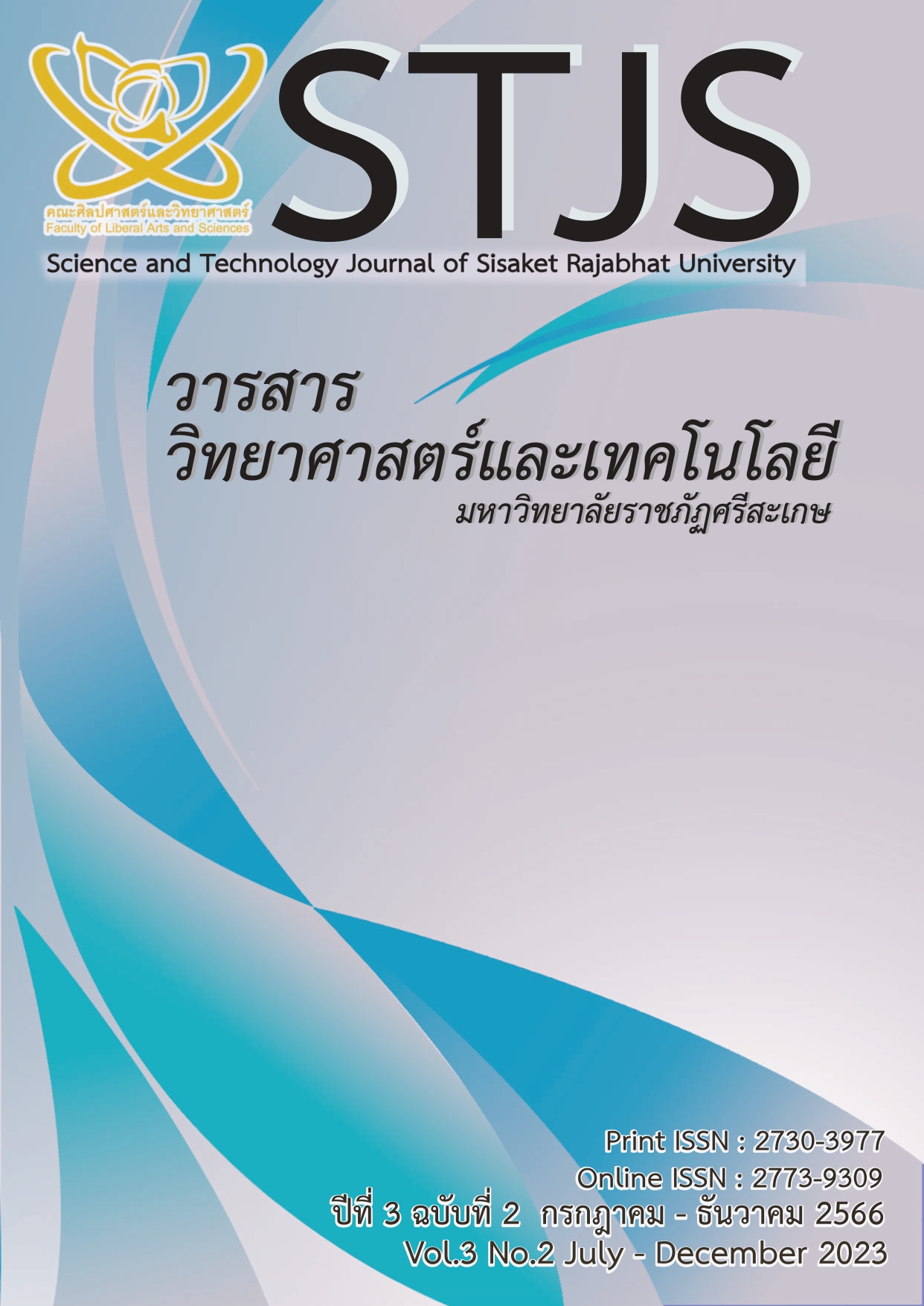เทคนิคการพยากรณ์การระบาดของไข้เลือดออกในเขตพื้นที่จังหวัดศรีสะเกษ โดยใช้ข้อมูลดัชนีดาวเทียมที่เกี่ยวข้องสภาวะอากาศและพืชพันธุ์
Main Article Content
บทคัดย่อ
ARIMA อย่างเห็นได้ชัด
Article Details

อนุญาตภายใต้เงื่อนไข Creative Commons Attribution-NonCommercial-NoDerivatives 4.0 International License.
เนื้อหาและข้อมูลในบทความที่ลงตีพิมพ์ในวารสารวิทยาศาสตร์และเทคโนโลยี มหาวิทยาลัยราชภัฏศรีสะเกษ ถือเป็นข้อคิดเห็นและความรับผิดชอบของผู้เขียนบทความโดยตรงซึ่งกองบรรณาธิการวารสาร ไม่จำเป็นต้องเห็นด้วย หรือร่วมรับผิดชอบใด ๆ
บทความ ข้อมูล เนื้อหา รูปภาพ ฯลฯ ที่ได้รับการตีพิมพ์ในวารสารวิทยาศาสตร์และเทคโนโลยี มหาวิทยาลัยราชภัฏศรีสะเกษ ถือเป็นลิขสิทธิ์ของวิทยาศาสตร์และเทคโนโลยี มหาวิทยาลัยราชภัฏศรีสะเกษ หากบุคคลหรือหน่วยงานใดต้องการนำทั้งหมดหรือส่วนหนึ่งส่วนใดไปเผยแพร่ต่อหรือเพื่อกระทำการใด จะต้องได้รับอนุญาตเป็นลายลักอักษรจากวารสารวิทยาศาสตร์และเทคโนโลยี มหาวิทยาลัยราชภัฏศรีสะเกษ ก่อนเท่านั้น
เอกสารอ้างอิง
Bureau of Epidemiology, Department of Disease Control, MoPH, Thailand. (2015). Retrieved 8 April 2023, from http://www.boe.moph.go.th/fact/Dengue_Haemorrhagic_Fever.htm.
ศูนย์สารสนเทศเพื่อการบริหารและงานปกครอง. (2559). ข้อมูลการปกครอง. สืบค้น 15 ตุลาคม 2559, จาก http://www.dopa.go.th/padmic/jungwad76/jungwad76.htm
Buczak, AL., Koshute, PT., Babin, SM., Feighner, BH., and Lewis, SH. (2012). A data-driven epidemiological prediction method for dengue outbreaks using local and remote sensing data. BMC medical informatics and decision making, 12(1), 1.
Dom, NC., Hassan, AA., Latif, ZA., and Ismail, R. (2013). Generating temporal model using climate variables for the prediction of dengue cases in Subang Jaya, Malaysia. Asian Pacific Journal of Tropical Disease, 3(5), 352-361.
Cheong, YL., Leitão, PJ., and Lakes, T. (2014). Assessment of land use factors associated with dengue cases in Malaysia using Boosted Regression Trees. Spatial and Spatio-temporal Epidemiology, 10, 75-84.
NOAA STAR center for satellite application. (2016). STAR - Global Vegetation Health Products: Si Sa Ket, Thailand. Retrieved 6 May 2023, from
http://www.star.nesdis.noaa.gov/smcd/emb/vci/VH/vh_browseByCountry_ province.php?country_code=THA&province_id=62&year1=2007&year2=2013.
Montgomery, DC., Peck, EA., and Vining, GG. (2015). Introduction to linear regression analysis. 4rd ed. John Wiley & Sons.
Wang, L. (2005). Support Vector Machines: Theory and Applications. Berlin: Springer.
Rao, AL., Semma, B., and Tilahun, T. (2018). Time series analysis of International Tourist Arrival to Ethioia2006-2015, A statistical analysis. International Journal of Business Management and Economic Review, 1(6), 117-141.
Herrera, V., & Nicolás, E. (2019). Skew index: descriptive analysis, explanatory power and short-term forecast. Retrieved 8 April 2023, from https://repositorio.uniandes.edu.co/server/api/core/bitstreams/ada1f1ed-95de-46e2-869b-a2f8b3939d50/content
Aghelpour, P., Mohammadi, B. and Biazar, S.M. (2019). Long-term monthly average temperature forecasting in some climate types of Iran, using the models SARIMA, SVR, and SVR-FA. Theor Appl Climatol, 138, 1471–1480 .
Gu H, Leung RK, Jing Q, Zhang W, Yang Z, Lu J, Hao Y, and Zhang D. (2016). Meteorological Factors for Dengue Fever Control and Prevention in South China. Int J Environ Res Public Health, 13(9), 867.
Benvenuto, D., Giovanetti, M., Vassallo, L., Angeletti, S., and Ciccozzi, M. (2020). Application of the ARIMA model on the COVID-2019 epidemic dataset. Data in Brief, 29, 1-4.


